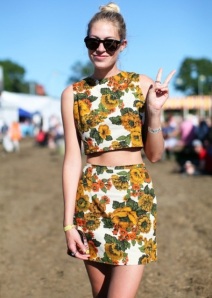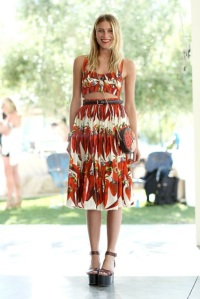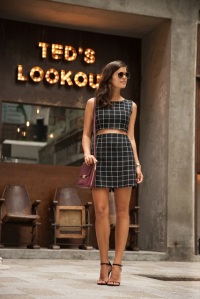We have a broad range of clients at Fashion For Globe, from the small hip boutique to the big name retailer. Deciding how to tailor your designs to both can be a daunting task. To help out, we asked an industry insider at one of our big name brands about what it takes for her to get excited and take notice of new designs.
There are some specific things that designers need to understand about the industry in order to submit boards, design ideas and illustrations of a professional quality.
- Companies who are FFG members have very specific brand identities… designers must do their homework and understand the brand in order to submit work that would be of interest to them. A designer who understands the market she is aiming for, doesn’t really need specific design direction or instructions from a company. The designers should approach each project like they would if they were interviewing for a job at a specific company, or set of companies in a given space in the industry.
Be sure the work is specific enough to a realistic market and isn’t too personal/quirky.
- That said, it’s important that designers understand relevant trends in that market, while also following the current direction in fashion at large, regardless of where on the industry food chain they wish to reside. It is as important to reference current fashion trends at the high-end, (e.g. designing a line for a luxury department store, like Barney’s private label, that is designed to hang with Marni and Stella McCartney) as it is when designing for a mass-market teen retailer, for example.
Don’t focus on designing work that is too “directional” (that’s code for weird).
- The work needs to reflect an understanding of realistic produce-ability of the designs within a given price point / range, while also offering the client excitement and “newness” (which does not mean “crazy-new”, but rather “new while not straying too far off what the brand is known for”!).
Be sure the work is capable of being mass-produced.
- Since many of these companies already have designers on staff, it’s important to understand there may be niches that FFG designers should look to fill in their product range. The designer must do their homework and ask – what is missing? For instance, a lot of retailers are getting in to the innerwear/dormwear/activewear space, but don’t necessarily employ designers who understand the unique design requirements and technical construction of, say, bras or yoga wear. The way for a designer on FFG to stand out, is to design into a specific category that the target retailer may not be in yet, but which would appeal to their customers.
Try to focus on designing for a specific product area.
- Another tip to try: Pinpoint industry hot spots or even weak spots…
- Designers can go after creating unique “fast fashion”, which is a hot sector at the moment that everyone is chasing, but no one knows how to do right. It’s gotta be trend-right and cheap. Young design talent may not get hired permanently by big brands to develop these sorts of products long-term, so it’s a great place to make a mark as a freelancer.
- An alternative way to look at this, is to focus on developing a unique technique, say an embroidery concept, that can be made in an artisnal, interesting way but for Western audiences. Designers in countries like India or Africa could use FFG to connect by offering beautiful work that has been repurposed for fashion that is relevant to the mall shopper.
Try translating traditional techniques to modern clothes.
- And above all, a polished and professional presentation is imperative. If the designer is not a strong illustrator of the figure (no mitten hands!) then he should present his concepts using other sorts of images, say really strong technical flat sketches, with collages of high-quality inspiration photos that he has taken himself (rather than downloading a bunch of stock images from the internet). Potential buyers will pay close attention to “taste level.”
Avoid being too extreme/sexualized/tacky/cheesy/personal for a big brand, it’s important to cultivate a really keen sense of what is cool/chic/classic/desirable/wearable that appeal to mainstream customers at any level of the industry food chain.”
Stay tuned for more Industry Insider interviews. In the meantime, utilize these tips to design for our Project of the Week contest. Until next time!




